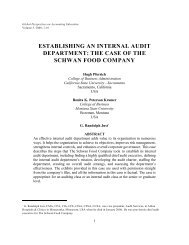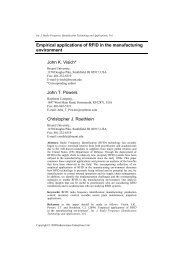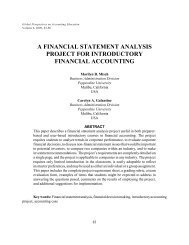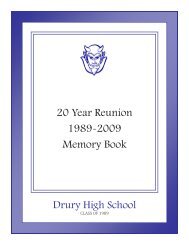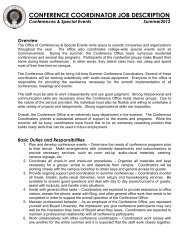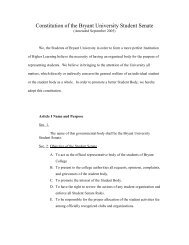Why use multiple-choice questions on accounting - Bryant
Why use multiple-choice questions on accounting - Bryant
Why use multiple-choice questions on accounting - Bryant
Create successful ePaper yourself
Turn your PDF publications into a flip-book with our unique Google optimized e-Paper software.
34 Simkin, Keuchler, Savage, and StiverA company purchased office supplies costing $3,000 and debited Office Supplies for the fullamount. At the end of the <strong>accounting</strong> period, a physical count of office supplies revealed$1,600 still <strong>on</strong> hand. The appropriate adjusting journal entry to be made at the end of theperiod would beA) Debit Office Supplies, $1,600; Credit Office Supplies Expense, $1,600.B) Debit Office Supplies, $3,400; Credit Office Supplies Expense, $3,400.C) Debit Office Supplies Expense, $3,400; Credit Office Supplies, $3,400.D) Debit Office Supplies Expense, $1,400; Credit Office Supplies, $1,400.Figure 1. A typical <str<strong>on</strong>g>multiple</str<strong>on</strong>g>-<str<strong>on</strong>g>choice</str<strong>on</strong>g> questi<strong>on</strong>Prepare the journal entries to record the following transacti<strong>on</strong>s <strong>on</strong> Paula Worth Company’sbooks using a perpetual inventory system. On February 6, Paula Worth Company sold$60,000 of merchandise to the J<strong>on</strong>es Company, terms 2/10, net/30. The cost of themerchandise sold was $30,000. On February 8, the J<strong>on</strong>es Company returned $10,000 of themerchandise purchased <strong>on</strong> February 6 beca<str<strong>on</strong>g>use</str<strong>on</strong>g> it was defective. The cost of the merchandisereturned was $5,000. On February 16, Paula Worth Company received the balance due fromthe J<strong>on</strong>es Company.Figure 2. A typical c<strong>on</strong>structed-resp<strong>on</strong>se (CR) questi<strong>on</strong>different types of <str<strong>on</strong>g>questi<strong>on</strong>s</str<strong>on</strong>g> <strong>on</strong> each exam was scaled to a percentage to permit us to test studentperformance c<strong>on</strong>sistently across semesters.In c<strong>on</strong>trast to the MC <str<strong>on</strong>g>questi<strong>on</strong>s</str<strong>on</strong>g> in the sample tests, each CR questi<strong>on</strong> required a student toperform computati<strong>on</strong>s for some specific <strong>accounting</strong> event. Figures 2 and 3 illustrate typical<str<strong>on</strong>g>questi<strong>on</strong>s</str<strong>on</strong>g>. Each CR problem was worth several points–typically in the range of 5 to 25 points. Allof these exam <str<strong>on</strong>g>questi<strong>on</strong>s</str<strong>on</strong>g> were graded using an answer template, limiting grading variati<strong>on</strong>s andrestricting the subjectivity involved in the process. The instructor in each class <str<strong>on</strong>g>use</str<strong>on</strong>g>d the same answerkey to grade each CR questi<strong>on</strong>, awarding partial credit c<strong>on</strong>sistently and in the same proporti<strong>on</strong> forpartially-correct answers.The MC <str<strong>on</strong>g>questi<strong>on</strong>s</str<strong>on</strong>g> appeared first in each examinati<strong>on</strong>, followed by the CR (problem-solving)<str<strong>on</strong>g>questi<strong>on</strong>s</str<strong>on</strong>g>. The cover page of the exam c<strong>on</strong>tained test instructi<strong>on</strong>s, informati<strong>on</strong> about how much eachquesti<strong>on</strong> was worth, and the maximum time available for the exam. In practice, most students beganby answering the MC <str<strong>on</strong>g>questi<strong>on</strong>s</str<strong>on</strong>g>, but test takers could also “work backwards” if they wished andbegin with the CR <str<strong>on</strong>g>questi<strong>on</strong>s</str<strong>on</strong>g>. This alternate test taking strategy is comm<strong>on</strong> am<strong>on</strong>g students whoprefer CR <str<strong>on</strong>g>questi<strong>on</strong>s</str<strong>on</strong>g> as well as for some internati<strong>on</strong>al students for whom English is a sec<strong>on</strong>dlanguage (Kuechler and Simkin, 2003). Due to the higher point weighting, it is also possible thatsubjects foc<str<strong>on</strong>g>use</str<strong>on</strong>g>d more attenti<strong>on</strong> <strong>on</strong> the <str<strong>on</strong>g>multiple</str<strong>on</strong>g>-<str<strong>on</strong>g>choice</str<strong>on</strong>g> <str<strong>on</strong>g>questi<strong>on</strong>s</str<strong>on</strong>g> than the problem solving/essay(CR) <str<strong>on</strong>g>questi<strong>on</strong>s</str<strong>on</strong>g>.Some prior studies of examinati<strong>on</strong> effectiveness have adjusted the scores of MC tests in anattempt to correct for the effects of guessing. One of the most recent investigati<strong>on</strong>s of the influenceof guessing <strong>on</strong> MC tests by Zimmerman and Williams (2003) c<strong>on</strong>curs with most prior research <strong>on</strong>that topic in stating that “guessing c<strong>on</strong>tributes to error variance and diminishes the reliability of


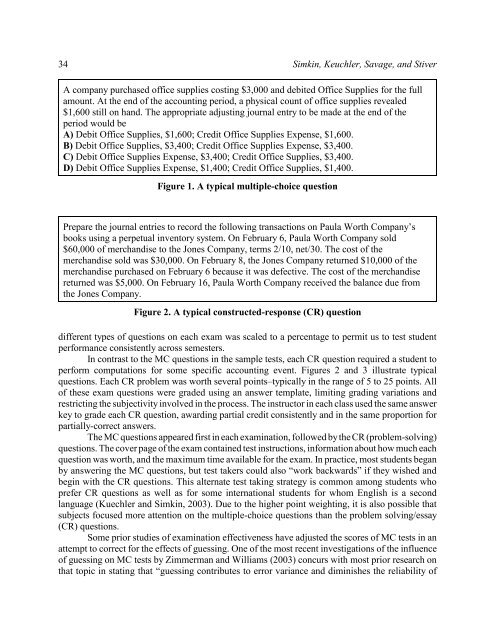
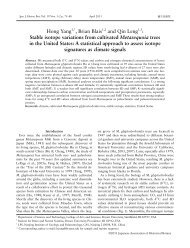
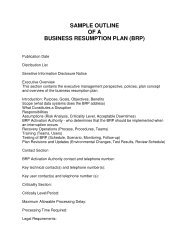
![[1] The Legal Environment of Business (LGLS211) Andrea Boggio ...](https://img.yumpu.com/45269009/1/190x245/1-the-legal-environment-of-business-lgls211-andrea-boggio-.jpg?quality=85)
